Earlier this year, True Colors Fund and the National Law Center on Homelessness and Poverty released the State Index on Youth Homelessness. This resource provides a snapshot of some of the legal, systemic, and environmental barriers and complex challenges youth experiencing homelessness face across the nation.
Below are a few highlights from the State Index:




More Highlights:
- Only 17 states met over half of the Index’s criteria and recommendations
- Six states failed to meet even 1/3 of the criteria (Alabama, South Carolina, Idaho, Arkansas, Utah, and Wyoming
- Many states have a lack of appropriate recognition of homeless youth in laws, policies and regulations:
- 41 states do not have a specific definition of the term “youth”
- 32 states do not define the term “runaway”
- 28 states lack explicit definitions of the terms “homeless child”, “homeless youth”, “homeless minor”, and “homeless student”
- 40 states do not subsidize childcare for eligible minor parents when employment or school is required under TANF



